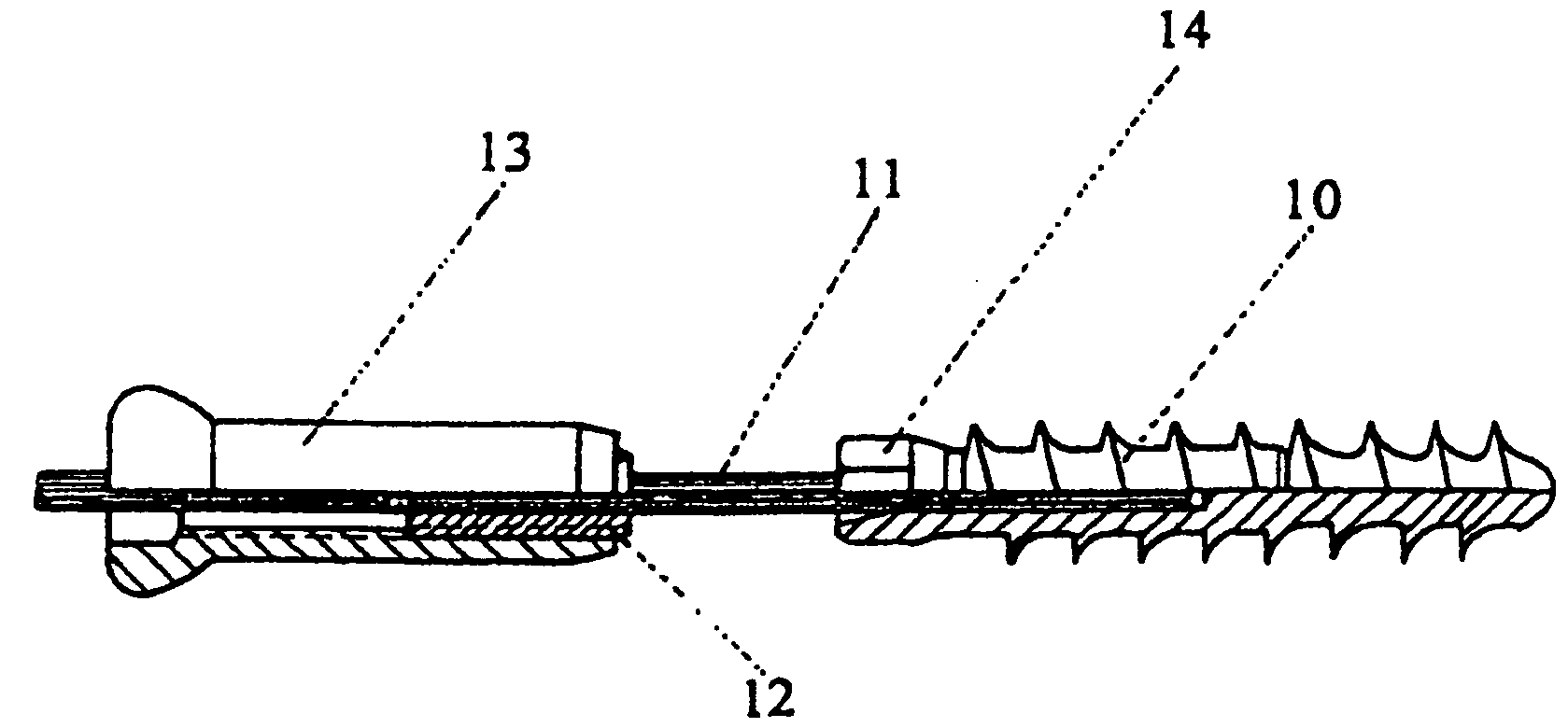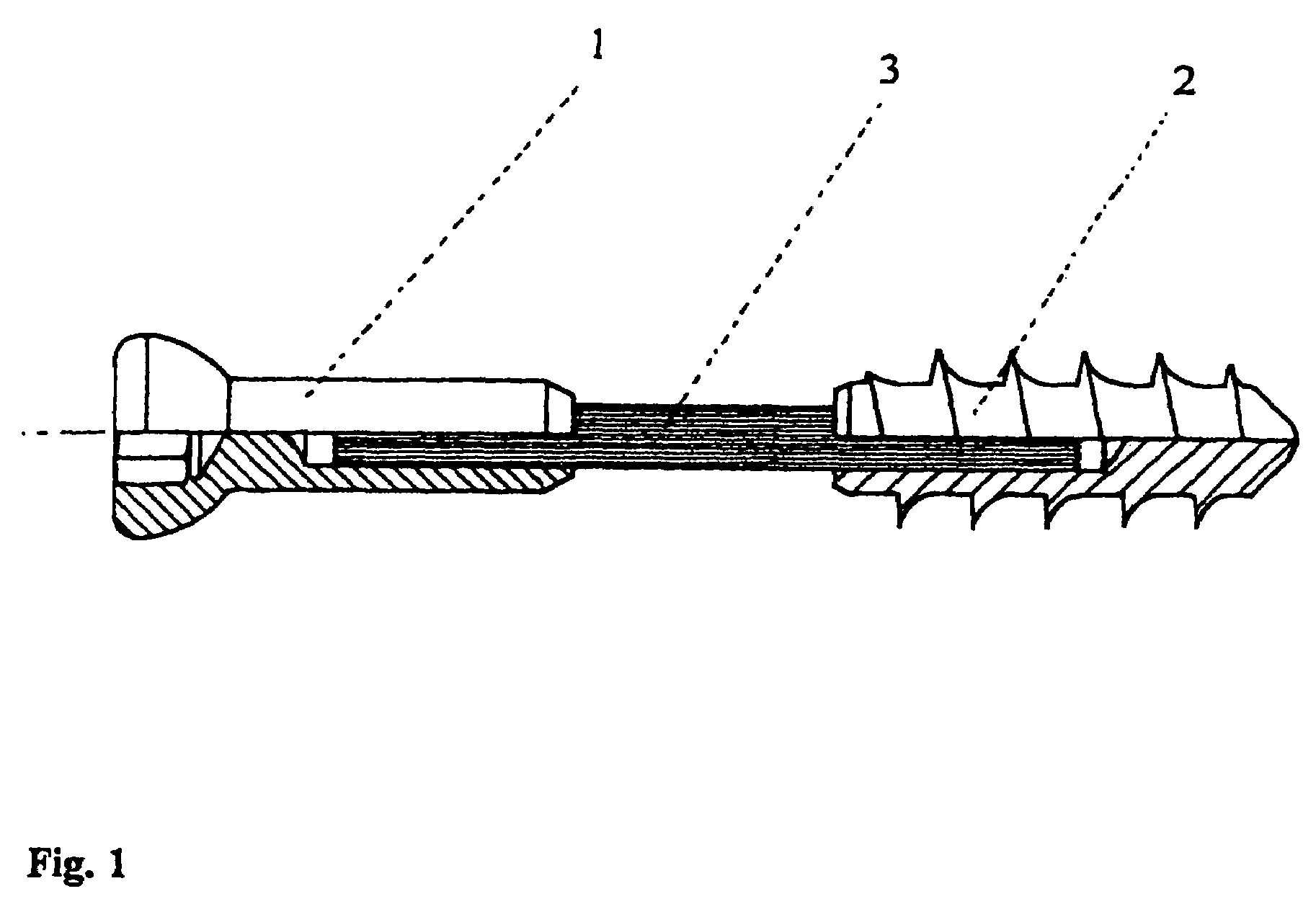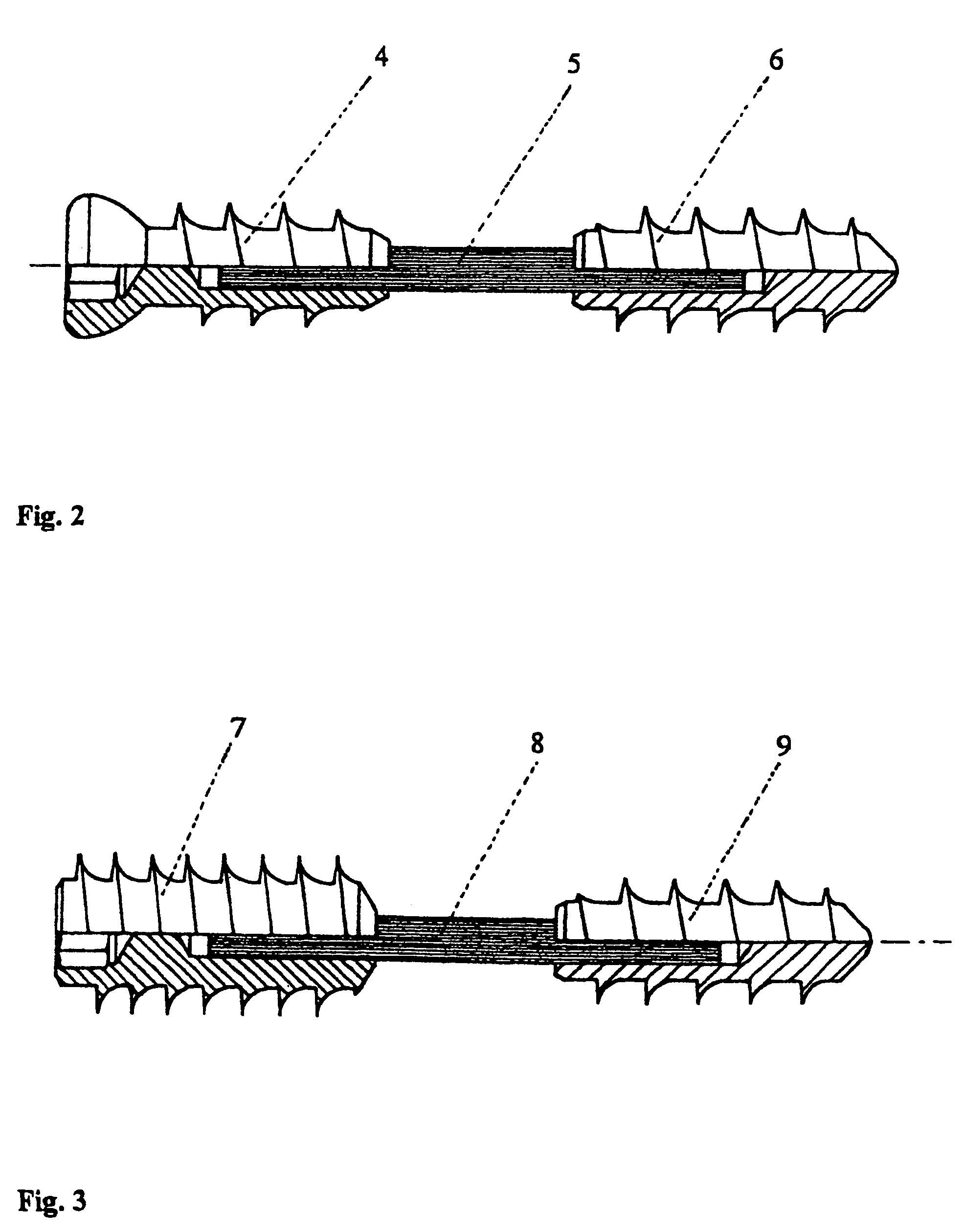Implantable screw for stabilization of a joint or a bone fracture
a technology for stabilizing screws and bones, applied in the field of implants for augmenting stabilization of bones, can solve the problems of severe physical impairment, inability to achieve the effect of simply suturing the capsule-ligament apparatus, and inability to withstand stress, and achieve the effect of high shaft flexibility and inadequate transferability of torsion moments
- Summary
- Abstract
- Description
- Claims
- Application Information
AI Technical Summary
Benefits of technology
Problems solved by technology
Method used
Image
Examples
Embodiment Construction
[0038]Throughout all the Figures, same or corresponding elements are generally indicated by same reference numerals.
[0039]Turning now to the drawing, and in particular to FIG. 1, there is shown a bone screw, whose head part 1 and whose threaded part 2 are flexibly interconnected by a wire cable or a wire bundle 3. The wire cable or the wire bundle is fixedly connected in the head part as well as in the threaded part through suitable connection methods (e.g., pressed, glued, soldered or welded connections). The use of a wire cable or a wire bundle allows the application of tensile forces and the transfer of torsion moments by way of a flexible shaft. Compressive forces, transverse forces or bending moments, however, are transmitted only to a slight extent.
[0040]FIG. 2 shows a bone locking screw which has a head part 4, which is provided with a bone thread, and a threaded part 6, which are flexibly interconnected by a wire cable or wire bundle 5 analogous to FIG. 1. The thread on the ...
PUM
 Login to View More
Login to View More Abstract
Description
Claims
Application Information
 Login to View More
Login to View More - R&D
- Intellectual Property
- Life Sciences
- Materials
- Tech Scout
- Unparalleled Data Quality
- Higher Quality Content
- 60% Fewer Hallucinations
Browse by: Latest US Patents, China's latest patents, Technical Efficacy Thesaurus, Application Domain, Technology Topic, Popular Technical Reports.
© 2025 PatSnap. All rights reserved.Legal|Privacy policy|Modern Slavery Act Transparency Statement|Sitemap|About US| Contact US: help@patsnap.com



